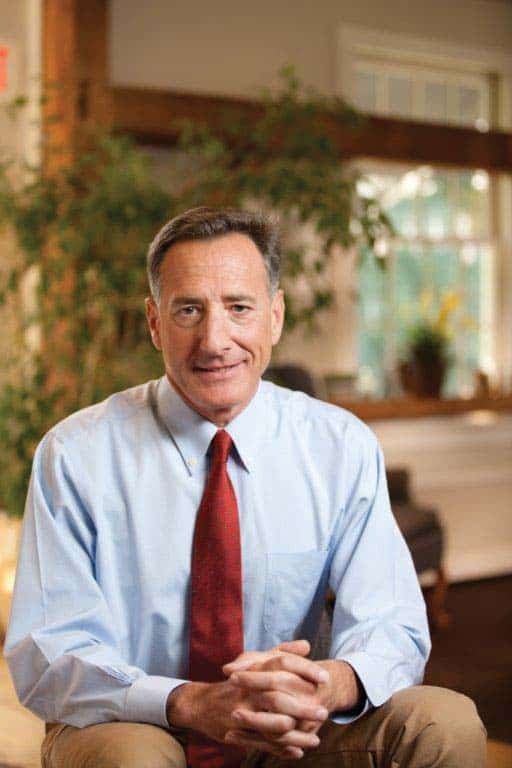By Gov. Peter Shumlin
When I came to office in 2011, I made expanding broadband Internet access to every last mile a priority. No one thought achieving that goal would be easy, especially since previous governors had set similar goals, only to fall short in the end. The same features that make Vermont an ideal place to live–rural communities separated by rolling hills and deep valleys–make expanding broadband incredibly difficult. Despite the challenges, four and a half years later we have achieved the goal we set to get Internet access to all Vermonters. Now our work must turn to increasing Internet speeds so Vermonters and businesses can keep up with the ever-increasing demands of business, commerce, and everyday life.
In 2011, I laid out a strategy to achieve the goal of universal access to broadband that included driving fiber optic cable as deep into rural Vermont communities as possible and getting the rest of the way to hard-to-reach places with mobile or wireless service. The numbers tell the story of our success.
In December of 2010, almost 38,000 Vermont addresses lacked access to broadband. Today, 100 percent of addresses in Vermont have access to broadband or a funded solution to get them broadband in place and in process–97.3 percent have access through a fixed provider and the rest through a mobile provider.
Achieving that progress has involved the work of many and could not have been done without the hard work of the best congressional delegation in America–senators Patrick Leahy and Bernie Sanders and Congressman Peter Welch. Thanks to their work and advocacy in Washington, Vermont was able to secure over $160 million in federal funds to spur the largest public-private partnership in the state’s history to help us achieve our goal.
Expanding access to all was a huge step. But the demands that everyday life places on our Internet-connected devices is increasing at lightning-fast speed. Think back to the expectations you had of your phone or computer just a few years ago, and compare those to the expectations you have now. Given those increasing demands we have work to do to keep up.
Currently, 70 percent of addresses in Vermont have broadband speeds in excess of 100/10 Mbps, which is top-notch service and rapidly becoming necessary for many business applications. Another 21 percent currently have, or will receive as a result of upgrades the Department of Public Service is requiring FairPoint to make, broadband speeds of less than 100/10 but greater than 4/1 Mbps. Both speed categories currently provide the users the ability to stream video, chat via video conference, and use most other consumer grade applications. It also allows for multiple users at the same time within a household.
That leaves nine percent of the addresses in Vermont with speeds of less than 4/1 Mpbs, which allows for only basic connectivity. For those Vermonters, we are putting them at the top of the list for upgrades.
Last year we set a new goal to get every address in Vermont broadband speeds of 100/100 Mbps, which is among the best service we have in Vermont. We established a connectivity fund, administered through the Department of Public Service, to make grants to help communities around Vermont increase speeds. To use those funds smartly, we’re targeting those underserved communities with slower speeds first and “leap-frogging” their speeds from among the slowest to among the fastest.
The first round of grant awards was announced early this year to the towns of Norwich, Pittsfield, Randolph, Royalton, Jamaica, Rochester, Reading, and Bradford. In addition, the Department of Public Service is completing fiber-build projects of more than 300 miles of new fiber in rural areas. When completed, this fiber will also be available to providers as an incentive to build-out more fiber in rural, underserved areas.
The accomplishments we have made in Vermont thus far are truly remarkable. As demand for higher broadband speed is ever increasing, we will continue to push further to ensure that all Vermonters have access to broadband speeds that allow the connectivity they require.




